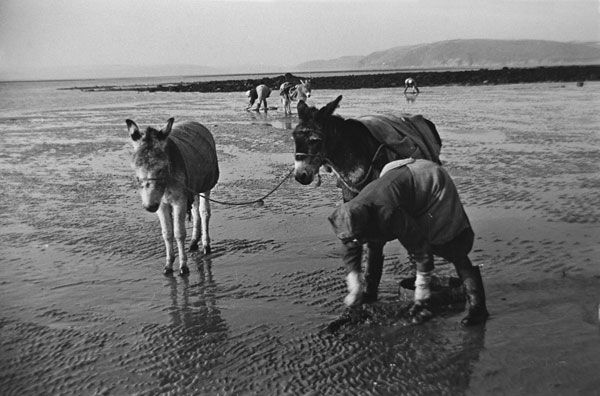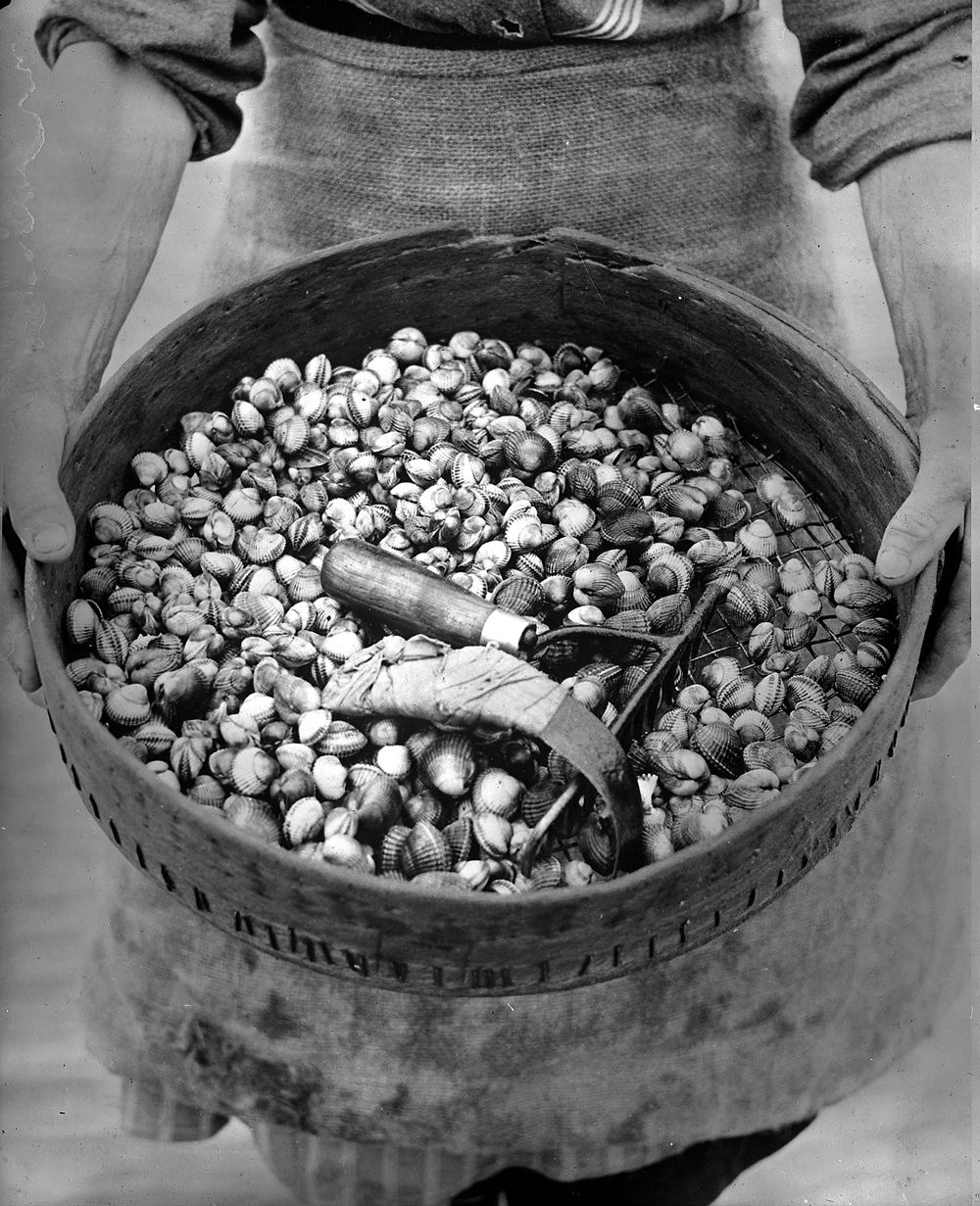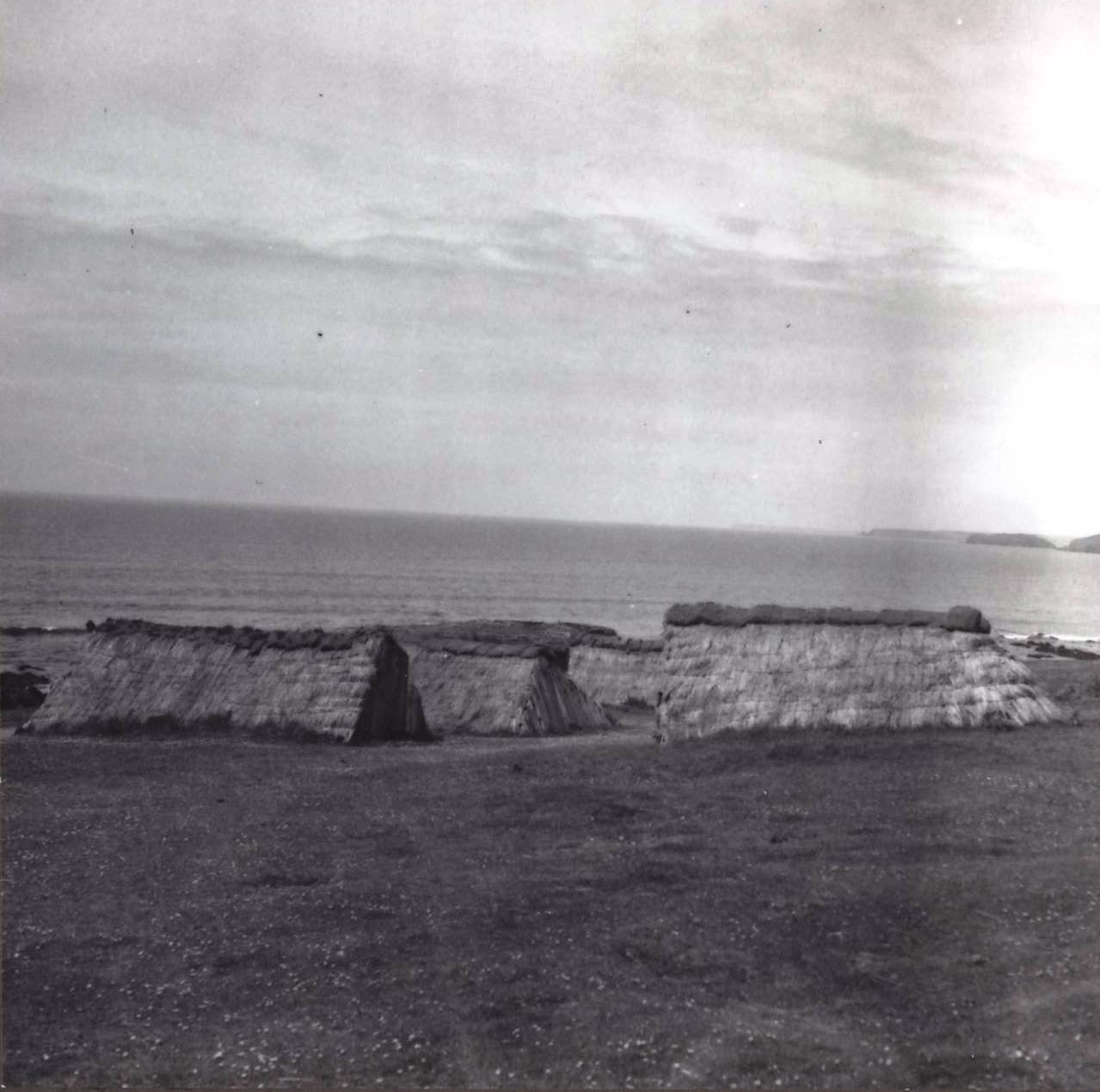Food from our shores
Introduction

Cockle-gathering on Llan-saint beach.

Cockle–gathering tools — a large sieve, a rake and cocses (a bent sickle blade).
For centuries, communities living close to the coast have taken advantage of the source of food available to them on the beach or coastal rocks. There is extensive evidence from prehistoric and Roman sites that shellfish have been harvested in Wales throughout the centuries. Free for their collecting, shell-fish have been found in profusion along the coast, the types most commonly collected and marketed by ordinary people being cockles and mussels.
Cockle gathering
During the latter half of the nineteenth and early decades of the 20th century, female cockle-gatherers were regular stall-holders at urban markets in south Wales. Others sold their harvest from door to door in industrial and coastal villages in both north and south. Cockles, boiled and removed from their shells (cocs rhython), were usually carried in a wooden pail, balanced on the vendor's head, while the untreated variety (cocs cregyn) were carried in a large basket on the arm.
By the time she reached her eightieth year one woman from Llan-saint, a coastal village in south Wales, had experienced sixty years of beach-combing for cockles. She referred to the usual pattern of daughters succeeding mothers in this occupation. They were dependent on this source of income. She recalled selling cockles for halfpenny a pint, but towards the end of her career the same quantity was sold for sixpence, a very mean reward for the tedious work involved. Gathering, washing and transporting them home from the beach was the initial stage, which had to be followed by a second process of washing, boiling and further transporting for marketing.
Served with bread and butter or oatcakes, cockles made a light meal and were included in various dishes containing eggs or milk and chives. Women in the village of Penrhyndeudraeth, Merioneth, would sing the following rhyme as they sold the shellfish from door to door:
Cocos a wya Bara ceirch tena Merched y Penrhyn Yn ysgwyd 'u tina
(Eggs and cockles Thin oatcake The girls of Penrhyn Their bottoms ashake)
Welsh caviar?

Laver gatherer huts (1936)
Another important food product from the sea was an edible seaweed called laver. In the eighteenth and nineteenth centuries women living in the coastal regions of Anglesey, Glamorgan and Pembrokeshire were ardent gatherers of laver. Collected from sea-shore rocks and stones, it had to be washed in seven lots of water to rid it of all its grit and sand. All excess moisture was then removed, and the clean laver boiled away slowly in its own moisture for some seven hours. Finally, it was drained and chopped very finely to give a greeny-black pulp.
Tossed in oatmeal and fried in bacon fat, it was usually served with bacon. Know as bara lawr, llafan or menyn y môr, laverbread was prepared as a commercial product by Glamorgan families, and was sold along with the cockles on the market stalls. At one time, these two items were prepared and sold strictly by low-income families. Eventually their marketing was developed into commercial enterprises of considerable importance. Today laverbread, often called Welsh caviar, has found its way on to delicatessen counters and is offered as an hors d'œuvre in first-class restaurants.